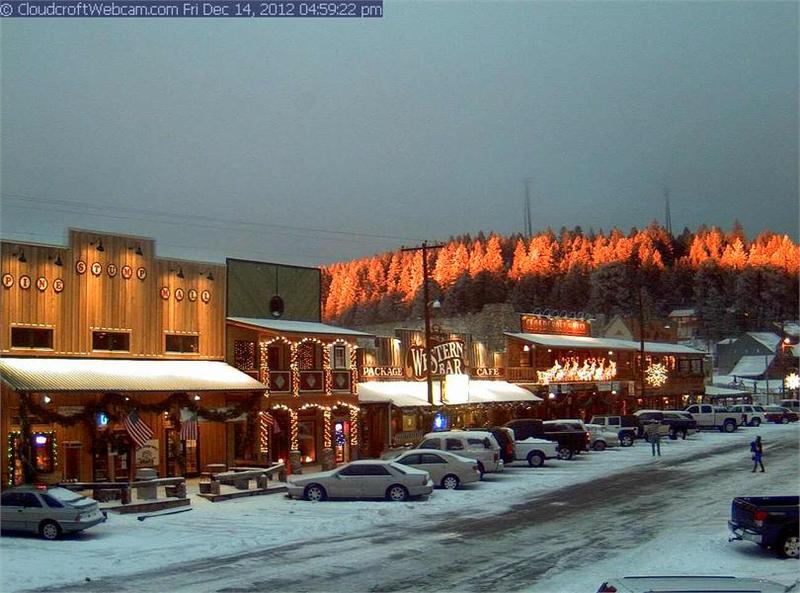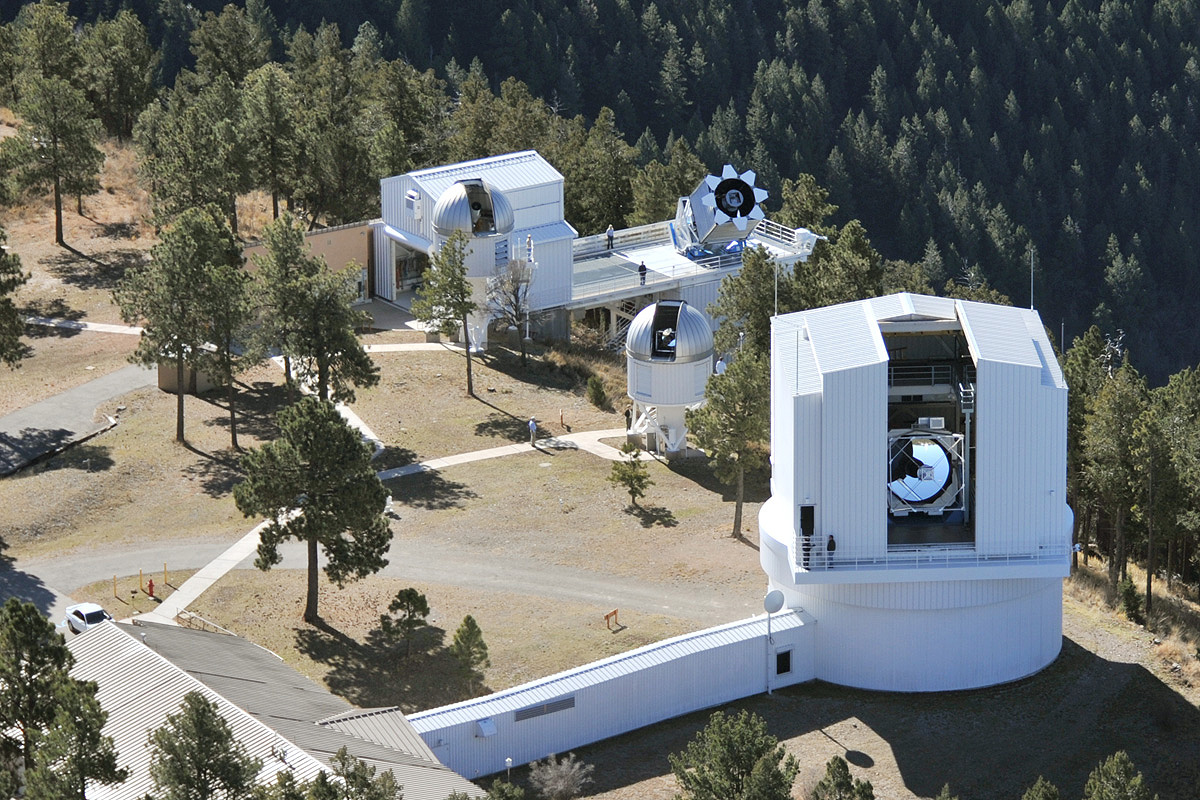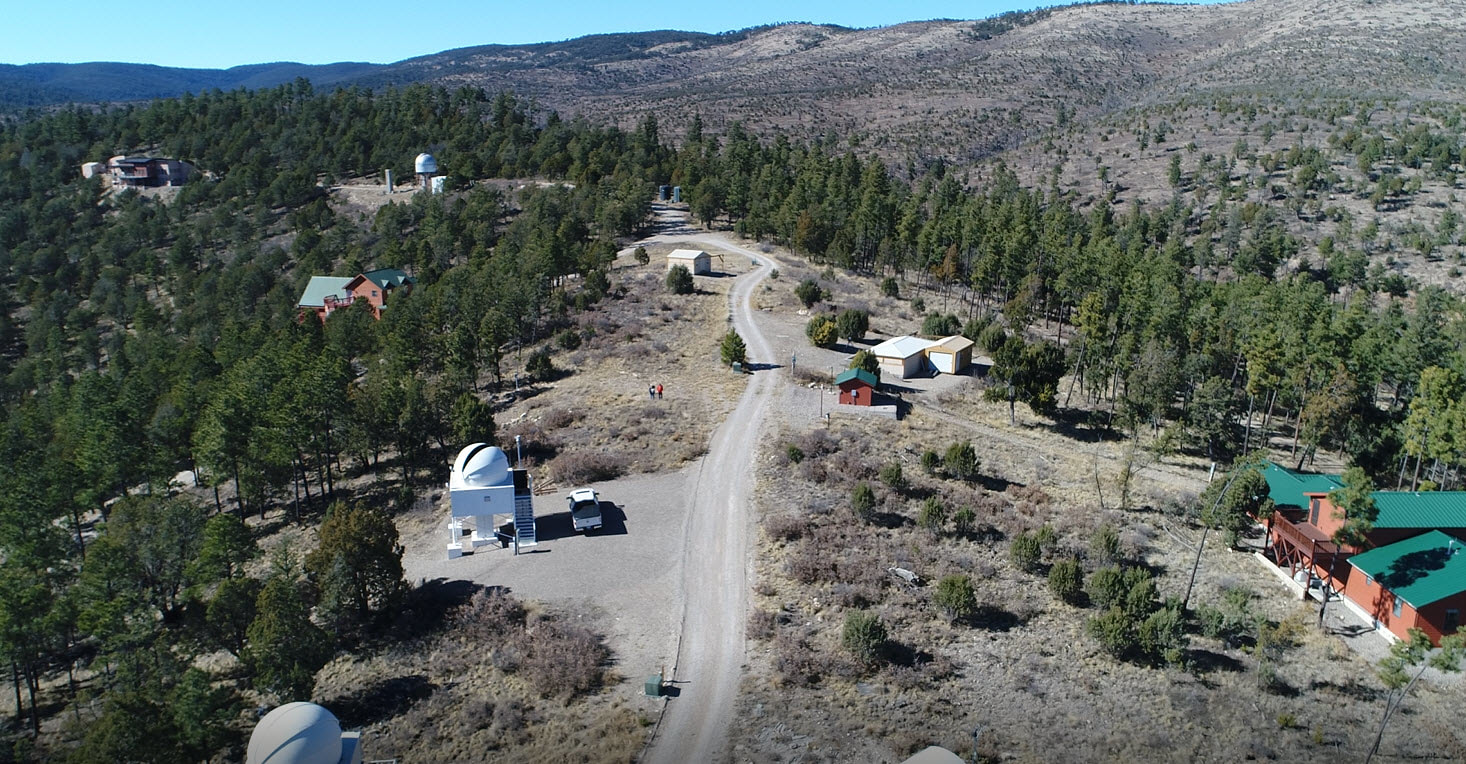
Louis D
-
Posts
9,365 -
Joined
-
Last visited
-
Days Won
1
Content Type
Profiles
Forums
Gallery
Events
Blogs
Posts posted by Louis D
-
-
50 minutes ago, Don Pensack said:
You measure using a ruler, correct? And in your case the uncertainty is from distance to the target and magnification error possibilities?
Yes, a ruler. I did an analysis of photographed field versus known good field values from Televue and other online sources for eyepieces I own. I arrived at a best fit coefficient to convert the photographed distance to the field stop value in millimeters.
Error can creep in whenever I setup again (I try to get the distance correct to with less than an inch over 35 feet or about 0.002% error). A bigger error creeps in because I eyeball the distance which can allow me to see more than could be seen from the center by swiveling my eye and looking to the side. As the image fades off to black for eyepieces with poorly defined field stops, where do you declare the actual field stop edge? This is an even bigger issue with eyepieces having massive chromatic aberration at the edge. Is the edge where all colors are present or where the last color is present? Should field stop be defined as the edge visible from the center of the eye lens or is peeking in from the edge of the eye lens allowed?
If I had a 24mm Panoptic, I'd probably be able to get a much more accurate field stop number for the 24mm APM UFF using differential distances and the official FS value from TV. However, it's tight eye relief precludes me from buying one.
I went back to my images and recalculated the 24mm APM UFF as a percentage of the 27mm Panoptic's 30.5mm field stop (TV specs) since I have images of both and arrived at 27.2mm for the APM. Your 27.3mm value is probably right on the money.
-
I would think you would want a combination of foil underneath and closed cell foam above to combat both radiational and convective cooling, respectively.
-
 1
1
-
-
Supposedly, the prisms in the ADC units correct the entire field. I would think the software method would work the same way. There is some variability of AD from top to bottom in wide field shots (more than a couple of degrees), so software would have to accommodate them for best results. However, AD may not be visible in truly wide angle images.
-
1 hour ago, Mark99 said:
Venus and Jupiter both had fringes. Red on one side, blue on the other. Venus was particularly bad, the fringes being as large as the size of the planet.
Are you saying red/blue fringes on either side of best focus or more like AD above when in focus? It's not unusual for APOs to have red or blue fringing on either side of best focus. It's the nature of the beast.
-
1 hour ago, MillHey Nebula said:
How do you distinguish between CA and atmospheric dispersion?
Here's a good example of AD before and after being corrected either in software alone or with an ADC and software:

-
For the 24mm APM UFF, I measured the AFOV to be 63° and the eAFOV to be 66° (27.5mm field stop diameter).
For the 30mm APM UFF, I measured the AFOV to be 72°/73° (projection/photographic) and the eAFOV to be 70° (36.4mm field stop diameter).
Thus, one must have edge compression while the other edge expansion. In use, neither is all that noticeable. The 24mm's edge vignetting/fuzziness right at the field stop is noticeable, though.
-
You may want to invest in a 0.63x reducer/corrector instead for photography. It would reduce your f-ratio to f/6.3 and focal length to 1260mm. This would help ease your way into astrophotography with it.
-
I took the elevator to the Sphinx observation deck back in '93 when I visited the Jungfraujoch with my wife. The view is quite spectacular. I've got to wonder though, how many clear nights a year do they get?
I'm looking at buying a second home near Cloudcroft, NM. Just to the south is the Sunspot Solar Observatory and Apache Point Observatory and to the east is the Remote Astronomical Society Observatory of New Mexico and Stars End astronomy subdivision.





-
False binoviewer collimation issues crop up from eyepieces tipping in the holders thanks to undercuts, and from diopter correctors not remaining concentric while being spun upward. Most binoviewers come very well collimated from the factory, so look at everything else if merging is an issue.
-
 3
3
-
-
@Tiny ClangerIf you've studied the StellaLyra, you've studied the GSO. They're the same. They're sold around the world under many different brand names (Apertura/Zhumell in US). Just like the JOC Dob is sold as Explore Scientific and Synta is sold as Orion as well as Sky-Watcher in the US.
-
 1
1
-
-
9 hours ago, ChknWhisperer said:
I live in central NC near Charlotte. Where are some of the better locations for astrophotography?
Nearby or in general? In general, parts of the American Southwest have excellent seeing conditions for the majority of the year. There's even an area of Mayhill, NM, dedicated to astro enthusiasts.
NC deals with a lot of bad weather year round, so you're going to be up against it regardless of location. I would guess coastal areas would have better seeing, being far from the turbulence induced by the Smokies to the west.
The Florida Keys have some of the best seeing conditions on the east coast of the US if you're thinking of a second home for astrophotography.
-
 1
1
-
-
GSO is GSO from Taiwan, Bresser is JOC from China, and Skywatcher is Synta from China. If you want European or American made, you're looking at a premium Dob costing many thousands more. To be honest, many of GSO's components are rumored to be sourced from Chinese factories for cost reasons.
I don't know if anyone has ever done a comprehensive test of the mirrors shipped with each telescope. Usually, they're considered pretty decent, but not exceptional.
Mechanically, the Bresser/JOC will probably be best with the large altitude bearings. I'm not a big fan of GSO's lazy Susan azimuth bearing because it can foul with ground grime and because it offers no "sticktion" to hold its position. Teflon riding on a pebbly surface has been the gold standard used by custom Dob manufacturers for decades. I have no idea, though, what the JOC azimuth bearing is.
I was unaware that the Bresser/JOC focuser had the ability to be upgraded to two speed, so that is a definite plus. The GSO focuser is generally well regarded, especially as compared to the SW/Synta version. None are going to be Feathertouch level refined, but it would cost as much as the scope as a whole in India.
At 10 inches, a proper mirror cell becomes important unless a center mounted conical mirror is used, and the JOC would seem to win out in this regard.
Don't underestimate the weight and bulk of a 10" scope as compared to an 8" scope. It's a not insignificant increase. That, and the f/5 mirror will be significantly more demanding on eyepieces than an f/6. You'll also probably want to invest in a coma corrector at f/5, whereas at f/6 coma is less intrusive.
-
10 hours ago, Piero said:
Yes, I did. See my comment at page 7 in the thread mentioned by Zermelo.
This one?
-
I agree that using binoviewers is your best option. Remember, the full moon is only as bright as asphalt at noon on a sunny day, so your eyes should have no issues with its brightness if you use both at the same time. I find viewing the full moon with binoviewers to give very rewarding, highly detailed, non-blinding views.

-
 1
1
-
-
@Don Pensack, how can you instantly get a feel for the amount of stretching or compression at the edge from AFOV and FS diameter without further calculations? I happen to like comparing AFOV to eAFOV because I instantly get a feeling for which kind of distortion the eyepiece has and how much of it. When the AFOV is greater than the eAFOV, I know the edge will appear stretched. When the AFOV is smaller than the eAFOV, I know the edge will appear compressed. When they equal, there is little to no noticeable stretching or compression. The relative difference between the two gives me an indication of how strong the effect will appear. I'm at a loss to understand this relationship from merely looking at the AFOV and the FS diameter without further calculations. Please describe how these two values describe the edge distortion present in an eyepiece without further calculation. Perhaps I'm missing something obvious.
-
I would skip the 3.2mm BST Starguider in favor of Barlowing a longer focal length eyepiece based on reports from Jon Isaacs on CN about the 3.2mm being not that sharp past 60% of the inner field in f/7 scopes. I have all the Paradigms/Starguiders except for the 3.2mm for this reason.
-
16 hours ago, Don Pensack said:
Of what value is knowing the calculated eAFOV is 65.2°? None.
OMG, it allows you to use bogus online tools like Astronomy Tools field comparator more accurately. That's certainly one valuable usage I would think. Too many newbies take the AFOV as gospel when it comes to calculating TFOV. They end up passing over eyepieces with smaller AFOVs and lower distortion in favor of eyepieces with larger AFOVs and higher distortion thinking they're getting more TFOV. I'm thinking specifically of the 24mm ES-68 vs 24mm APM UFF.
Why don't you go out and write a corrected ATFC webpage that uses field stop instead of AFOV for TFOV comparisons? Until then eAFOV is very useful, at least for that webpage.
I also find eAFOV valuable when comparing eyepieces of like focal length. Sure, I know the field stop values, but how does that translate at a particular focal length? eAFOV has a much more intuitive feel to it than field stop diameter when comparing eyepieces at a particular focal length to better understand what will actually be seen if distortion was nonexistent. I do use field stop values to compare eyepieces of different focal lengths' TFOVs, if that makes you feel any better.
-
 1
1
-
-
I bought a second SVBONY 68° Ultra Wide Angle 20mm when they went on sale for $20 shipped via ebay. I finally had the chance to try them out as a pair in my Arcturus binoviewer with a Meade 140 2x Barlow nosepiece to reach focus. In my f/6 Dob without CC, the 3x equivalent equates to about an f/18 operating focal ratio.
They work insanely well together. Merging and holding the two images was a piece of cake. There were no blackouts that had to be fought off. Eye relief was sufficient to comfortably take in the view with eyeglasses while just touching the flipped down eye cups. Stray light was well controlled as was scatter around the planets. The sky background was nice and dark. Sharpness was excellent to the edge (remember, f/18). The pair was easily as good or better than my vintage wide field microscope eyepieces that had been my mainstays. The 23.7mm field stop plays very nicely with the 22/23mm clear aperture of the binos. I saw no vignetting near the sharp field stop. The only downside was their barrel undercut. I had to spin the collets quite a few turns to tighten them down. I will definitely be hunting down silver metal pinstriping tape to fill them.
The pair were resolving brighter stars across the core of M22. The Cassini division and a band on Saturn were easily visible. Multiple bands on Jupiter were seen despite the magnification being a bit high for the seeing conditions tonight. Star fields were sharp across the field with no visible edge of field brightening (EOFB).
Overall, they were a delight to use together as I had suspected based on monoviewing. Having paid about $50 for the pair with sales tax, I'm very happy with them. They have kicked my 19mm Konig binocular eyepiece pair out of my bino case. The SVBONYs were far and away better. They are highly recommended if you binoview at long focal ratios with eyeglasses.
-
 5
5
-
 1
1
-
-
With my astigmatism, I'm lucky to split Mizar/Alcor naked eye (many moons ago, haven't tried recently). The DD just looks like a single star to me naked eye.
I've found going up in aperture helps extract more detail than trying to buy exotic eyepieces. Going from 4" to 8" to 15" makes a huge difference in what can be resolved.
-
 1
1
-
-
I had battery corrosion ruin my original. Replacement battery holder didn't help. I'm guessing battery out-gassing corroded something in the rest of the unit.
-
It would be nice if it included a filter wheel or slide of ultra-narrow band emission line filters so it could stack nebula images in real time.
-
 1
1
-
-
Good luck in your observing adventures. Give both cyclops and binoviewing a try on all object types to find out what works best for you.
We haven't even discussed EEVA preferences. Many folks with deep enough pockets do most of their nebula observing with high end night vision gear nowadays. I have seen the difference it makes at a star party, and it is dramatic.
-
1 hour ago, PeterC65 said:
I was observing the almost full Moon last night with the BHZ and took the opportunity to check the AFOV that I was getting for a 24mm zoom setting. I found I could only just fit the Moon’s disc into the field of view of the EP and I’d say I was getting an AFOV of about 0.6°. With my Skymax 127 that suggests the BHZ is giving a FOV of 38° for 24mm. The Baader spec says it should be 48° but @Louis D mentioned in this post that it may be less and this review of the BHZ measures the FOV at 42° for 24mm. I haven’t checked the FOV at 8mm but the Baader spec is 68° and that doesn’t seem to be disputed.
Remember, the field stop diameter actually determines the TFOV visible, not the angular size of the AFOV. There can be, and generally is, quite a bit of edge distortion that decreases the TFOV from what an AFOV calculation would predict. Thus, I'm sure the actual AFOV of the BHZ is actually around 40° to 42°, but due to distortion, the effective AFOV (eAFOV) is actually 38° as you found. The AFOV of 68° at 8mm may actually translate to an eAFOV of 66° due to distortion. Only detailed measurements can resolve this issue.
The 24mm ES-68 has quite a bit of distortion, being modeled after the Panoptic line. My 27mm Panoptic has 68° to 69° of AFOV, but has an eAFOV of only 65° to 66° due to distortion. Thus, using AFOV figures to calculate TFOV is fraught with error unless you know the eAFOV based on field stop measurements.
-
 1
1
-
-
It seems like a natural move for more mounts to integrate smartphones as Celestron has done with their StarSense system. Between cameras for plate solving and various sensors and cell tower triagulation, it should be straight forward to figure out where you're pointing, where you are on earth, know the exact time of day, and show you star charts and object info. As such, it would help to keep down the cost of a computerized mount by not having to duplicate all of these things that you already have in your pocket.














The Sphinx Observatory
in The Astro Lounge
Posted
That, and the weather is cool in the summer with low humidity. Winters are fairly mild by mountain standards due to being so far south and surrounded by desert.